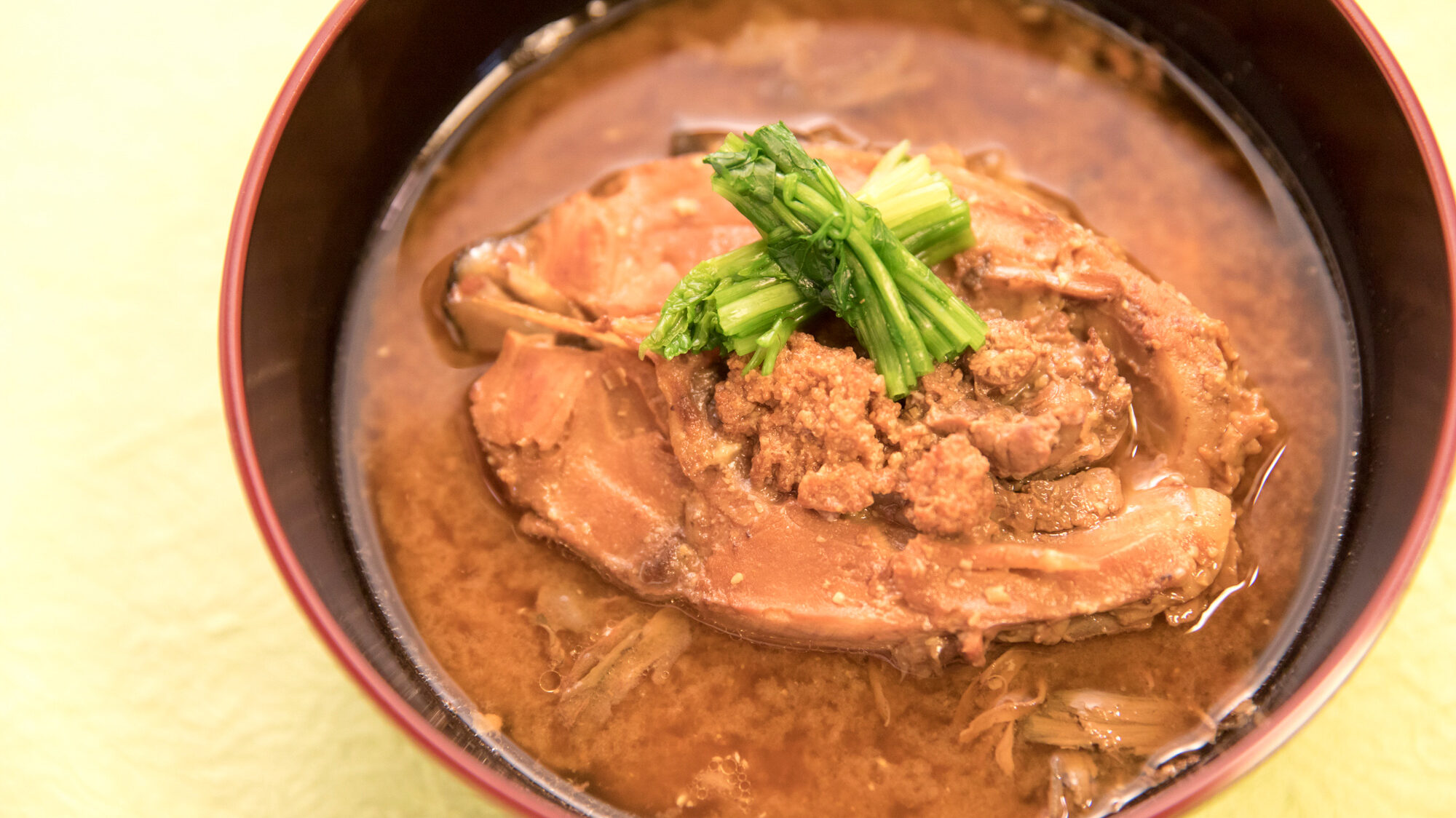
Let’s dive into a hearty and traditional Japanese dish hailing from Nagano Prefecture. Known for its rich flavors and cultural significance, this local specialty features a freshwater fish raised with care in the clear waters of the region. It’s a dish that tells a story of the land and its people.
Dish Name: Koi Koku
- Region / Location: Nagano Prefecture
- Primary Area of Tradition: Saku City
- Main Ingredients: Carp, Miso, Rice
How It’s Eaten / Served
Koi koku is a bold and flavorful miso-based soup featuring carp that has been cut into thick, cylindrical pieces. It’s a common dish during the New Year celebrations in the Saku region. The preparation can vary from household to household, with some adding sugar to the miso and others leaving the scales on the carp. It’s often enjoyed with a sprinkle of powdered Japanese pepper (sansho) to enhance the taste.
Cultural Background and Preservation
In Saku City, located in eastern Nagano Prefecture, carp farming flourished by utilizing rice paddies, especially in the challenging terrain of the Saku Plain where double cropping was difficult. The cultivation of “Saku Koi” (Saku Carp) began in the late 18th century. It’s said that Dan’emon Usuda, a kimono merchant from Sakurai, brought carp back from Osaka during the Tenmei era (1781-1789). Later, in 1825, Lord Bungo no Kami Naito of the Iwamurada Domain received “Yodo Koi” from Osaka upon his return and gifted them to Shichizaemon Namiki, a wealthy merchant in Nozawa, which helped establish carp farming in the area. The rise of the silk reeling industry after 1872 made silkworm pupae readily available as feed, leading to a boom in carp production and establishing the national reputation of “Saku Koi.” While carp farming in Saku declined due to changing dietary habits and the spread of agricultural chemicals, recent efforts to promote reduced-pesticide farming and rice paddy adjustments have spurred a revival of “Saku Koi.”
Unlike common carp that are typically harvested in two years, “Saku Koi” takes three to four years to reach a suitable size for eating. Raised in the cold, clear waters of the Chikuma River, this carp develops firm flesh with minimal muddy taste and a perfect amount of fat. Besides koi koku, “Koi no Umami-ni” (simmered carp with a sweet sauce) is another familiar dish in the Saku region, where well-fattened carp practically melts in your mouth. The carp meat itself is light and fluffy with a good amount of fat, and the bones make a delicious broth. Despite the common perception of carp being muddy, “Saku Koi” raised in pure streams is even delicious as sashimi, and “arai” (thinly sliced carp chilled in ice water) pairs wonderfully with local Saku sake.
Carp has become an indispensable fish for celebratory occasions in this mountainous region, especially during the New Year, symbolizing a wish for a year of good health and without illness. Even today, koi koku is prepared in many households and served in local restaurants and inns. The “Saku Koi Festival” is held every May, drawing crowds eager to purchase carp. January 6th has been designated as “Saku Koi Day” by the Japan Anniversary Association, commemorating the day in 1746 when Sagoemon Shinozawa Shigeno no Kanemichi of Saku presented “carp dishes” to the high priest Fukushima Toba Daibu at the Ise Grand Shrine.
Additional information:
- Two-crop system (二毛作 – nimōsaku): An agricultural practice of planting two different crops in the same field in one year.
- Rice paddy (水田 – suiden): A flooded field used for growing rice.
- Kimono (呉服 – gofuku): A traditional Japanese garment.
- Domain (藩 – han): A feudal administrative region in Japan during the Edo period.
- Sake (酒 – sake): Japanese rice wine.
- Powdered Japanese pepper (粉山椒 – kona-zanshō): A spice made from the ground berries of the Japanese prickly ash tree, known for its citrusy aroma and slightly numbing sensation.
- Silkworm pupae (さなぎ – sanagi): The stage in the silkworm’s life cycle between larva and moth, often used as animal feed.
- Reduced-pesticide farming (減農薬栽培 – gen’nōyaku saibai): An agricultural method that minimizes the use of chemical pesticides.
- Rice paddy adjustment (減反調整 – gentan chōsei): Government-led efforts to reduce rice production to manage supply and demand.
- Sashimi (刺身): Thinly sliced raw fish or seafood.
- Arai (洗い): A method of preparing fish, typically by briefly rinsing thinly sliced pieces in ice water to firm up the flesh.
The information about regional cuisine featured on this website (Piggy's Grandma of Japan) is summarized and adapted from the Ministry of Agriculture, Forestry and Fisheries of Japan (MAFF) website, "Our Regional Cuisines"Additional commentary is provided based on the unique experiences and perspectives of the site's editors.
The copyright for the original content regarding regional cuisine belongs to the Ministry of Agriculture, Forestry and Fisheries of Japan.
The summaries and adaptations published on this site are intended for informational purposes only. Piggy's Grandma of Japan does not guarantee the accuracy or completeness of this information. For the most accurate and complete details, please refer to the original pages on the MAFF website.

